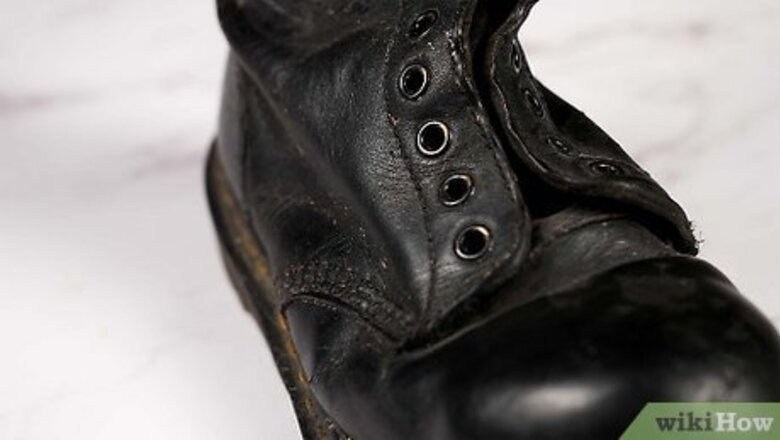
views
Cleaning Leather by Hand

Determine what kind of leather you're trying to clean. Knowing the type of leather you have will help you select the correct cleaning product. Natural or untreated leather does not have a protective coating, while treated leathers do. You can tell that your leather is untreated if it's soft to the touch and doesn't feel like it has a plastic coating. Untreated and natural leathers may change color after you clean them. Treated or coated leather is easier to clean.
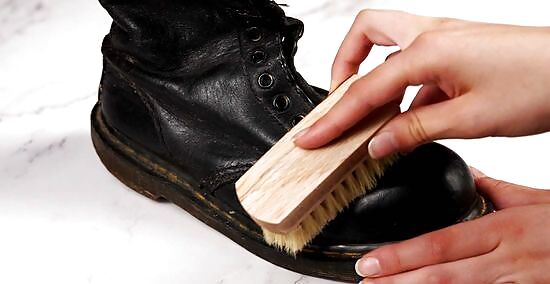
Dust the leather off. Use a cloth or soft brush to wipe off any initial dirt, dust, or oils that may have built up on the leather. Go over the entirety of the leather surface with the cloth and go in small circular motions in areas that are especially dirty. Regularly dusting your leather will keep it looking clean for a longer period of time.
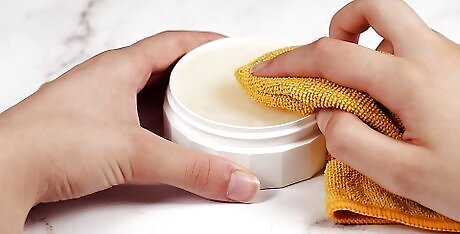
Apply a leather cleaning solution to a rag. The type of leather you're trying to clean will help determine which soap or cleaning solution you need to use. For instance, if you are cleaning old leather shoes or an old leather saddle, you can use saddle soap. Remember to always read the instructions on the back of the packaging when using any leather cleaner. Methylated spirits is a common cleaner used to restore antique leather. Saddle soap or a cellulose-based cleaner like Cellugel can help you clean your old leather books without damaging them. For leather jackets and handbags, a solution of mild dish soap and water or leather wipes will work.
Wipe down the surface of the leather with the solution. Go over the entirety of your leather in small, circular motions. Make sure to rub the soap in especially damaged areas of the leather.
Wipe off the excess solution with a clean cloth. The leftover cleaning solution can damage leather and cause extreme drying. Use a separate, clean cloth to remove all of the soap from the leather.
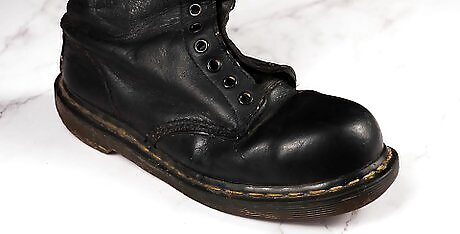
Let the leather dry. Allow the leather to air dry for one or two hours. Do not use heat to dry leather because it can cause excessive drying and can weaken and crack it.
Conditioning and Moisturizing Old Leather
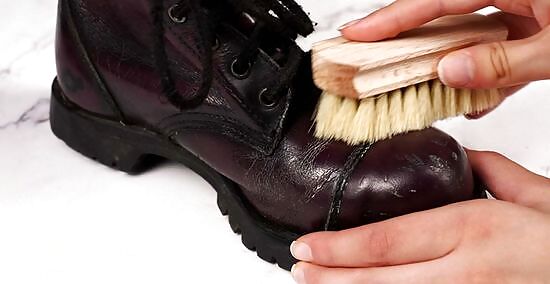
Dust off the old leather. If your leather is flaking or cracking, do not agitate the leather or you may rip it. Instead, lightly dust the leather item with a dry cotton cloth, feather duster, or soft brush. Typically you'll need to dilute leather cleaner with water before you use it.
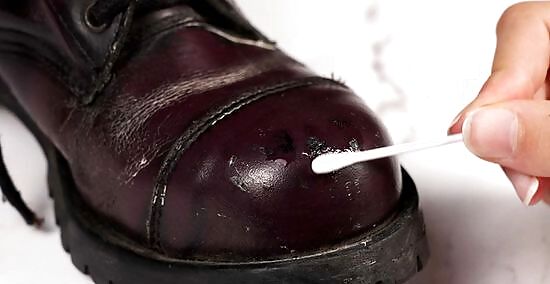
Put oil over any scratches or cracks on finished leather. Dip a cotton swab into olive oil or baby oil and apply the oil to scratches or cracks on your leather. Allow the oil to sit for at least five minutes before buffing it into the leather. This should remove some lighter scratches. Let the oil dry before moving onto the next step. Do not use oil on natural leather or you may affect the patina or color in the leather.
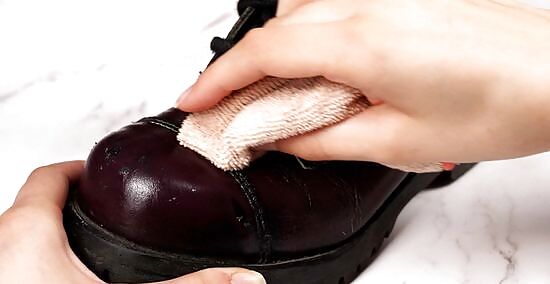
Rub a conditioner or moisturizer into the leather. Purchase a leather conditioner such as mink oil, leather honey, or neatsfoot. Add a dollop of the leather conditioner to a clean cloth and rub it into your leather. Before going over the entire item, test a small area to see how it changes the leather's color. Use small, circular motions when doing this. Go over the entirety of the leather's surface so that the coloring is even.
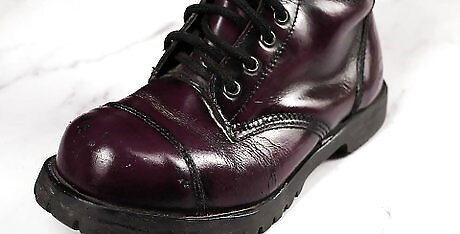
Let the conditioner dry. Before using or handling your leather, make sure that the conditioner fully dries. Following the proper storage will help keep your leather looking clean for a longer time. Do not apply direct heat to the leather or it could cause cracking.
Storing Old Leather
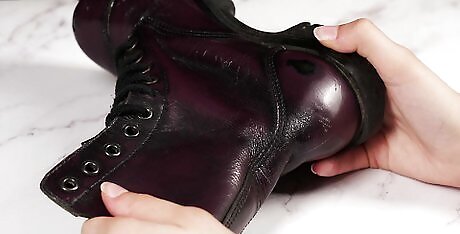
Do not bend old leather. Bending old leather could cause it to crack and break. If you are storing your old leather item, make sure it's on a flat surface that supports the leather's shape.
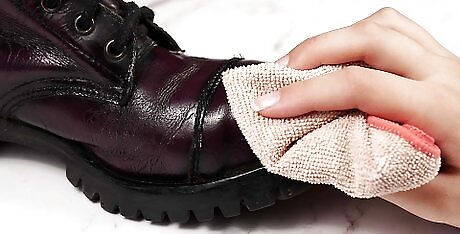
Treat spills and stains immediately. Treat spills and stains immediately with a leather cleaner. The longer the stain sits, the harder it is to get out.
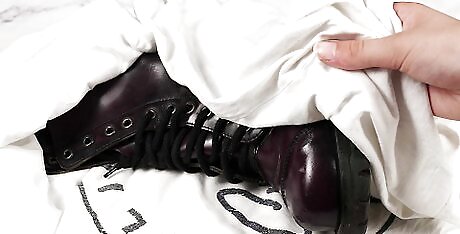
Wrap old leather in cotton fabric or acid-free tissue. This will help prevent additional cracking in your leather. It will also keep dust and dirt from settling on the leather. If you are storing things like shoes or gloves, stuffing them with polyester batting or unbuffered tissue paper will help the items retain their shape and will prevent cracking.
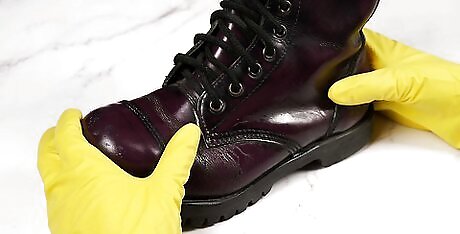
Wear gloves when handling antique leather. Wear cotton or nitrile gloves when cleaning or handling your antique leather item. You can purchase these gloves at a department store or online. Wearing gloves will prevent the oils, dirt, and moisture from your hands from being transferred onto the leather.
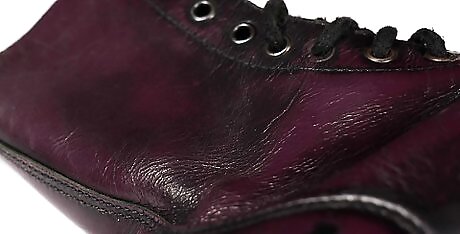
Take your leather to a professional if it is experiencing red rot. Red rot is a condition that breaks down the structure of old leather. This will usually look like peeling and cracking over the entire surface of the leather. Cleaning leather that is experiencing red rot is difficult if you don't want to damage and devalue the item. A professional will have the equipment and materials to restore your leather item.




















Comments
0 comment